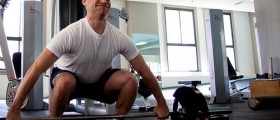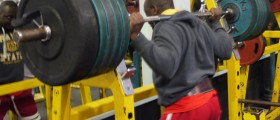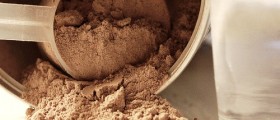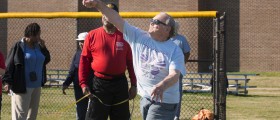There is no scientific evidence involved that i have found after much research. There are too many variables involved to conclude the experiment. Keep in mind, growth plate closure theory is just a theory, not a scientific law.
To the issue of weightlifting before growth spurts, i myself am a prime example. I started weight lifting at 12 and could match my body weight in squat by 13. Around the same time, i under went 3 major growth spurts, now being 23cm taller than when i started, and 20-23 kilos heavier, but i am still classified as a skinny person. Currently i am 176cm and 62kg at 14 year old.
No doubt weightlifting with incorrect technique or excessive training regime can lead to overuse injury, but the positive effects are greater. Recently i have had a wrist overuse tendon injury. After having an Xray scan, my ulnar has not yet hardened and fused into one bone, proof that i am still growing. About to reach the same height as my father, definitely taller than my mother.
I definitely recommend hitting up the gym, but remember to not train too excessivly (i mean 4 times a week of 2hours which is too much for my own good). Train hard!
Loading...
Loading...
Loading...
Here are 52 articles that will prove weight training is safe. The one stipulation being that you are under supervision but almost all weight training injuries are due to either bad lifting machanics or acute injury. Both of which can be corrected by a fitness professional. So it is safe if you are taught correctly how to do it and have a competent person to spot you. If you have any papers showing it will stunt your growth post it I want to include it in my paper.
1. American Academy of Pediatrics. Strength training by children and
adolescents. Pediatrics. 2001;107:1470–1472.
2. Faigenbaum AD. Youth resistance training. Research Digest, President’s
Council on Physical Fitness and Sports. 2003;4:1–8.
3. Sale DG. Strength training in children. In: Gisolfi CV, Lamb DR, eds.
Youth, Exercise, and Sport. Indianapolis, IN: Benchmark Press; 1989:
165–216.
4. Mazur LJ, Yetman RJ, Risser WL. Weight-training injuries. Common
injuries and preventative methods. Sports Med. 1993;16:56–73.
5. Gould JH. Injuries to children involving home exercise equipment. Arch
Pediatr Adolesc Med. 1994;1107–1109.
6. National Youth Sports Safety Foundation. Youth Sports Deaths. Boston,
MA: National Youth Sports Safety Foundation; 1999.
7. Guy JA, Micheli LJ. Strength training for children and adolescents. J Am
Acad Orthop Surg. 2001;9:29–36.
8. Blimkie CJR. Resistance training during pre- and early puberty:
efficacy, trainability, mechanisms, and persistence. Can J Sport Sci.
1992;17:264–279.
9. Blimkie CJR, Sale DG. Strength development and trainability during
childhood. In: Van Praagh E, ed. Pediatric Anaerobic Performance.
Champaign, IL: Human Kinetics; 1998:193–224.
10. Falk B, Tenenbaum G. The effectiveness of resistance training in children:
a meta-analysis. Sports Med. 1996;22:176–186.
11. Payne VG, Morrow JR, Johnson L, et al. Resistance training in children
and youth: a meta-analysis. Res Q Exerc Sport. 1997;68:80–88.
12. Vrijens J. Muscle strength development in the pre- and post-pubescent
age. In: Borms J, Hebbelinck M, eds. Pediatric Work Physiology. Basel:
Karger; 1978:152–158.
13. Pfeiffer RD, Francis RS. Effects of strength training on muscle
development in prepubescent, pubescent, and postpubescent males. Phys
Sportsmed. 1986;14:134–143.
14. Sewall L, Micheli LJ. Strength training for children. J Pediatr Orthop.
1986;6:143–146.
15. Weltman A, Janney C, Rians CB, et al. The effects of hydraulic resistance
strength training in pre-pubertal males. Med Sci Sports Exerc. 1986;18:
629–638.
16. Rians CB,Weltman A, Cahill BR, et al. Strength training for prepubescent
males: is it safe? Am J Sports Med. 1987;15:483–489.
17. Sailors M, Berg K. Comparison of responses to weight training in
pubescent boys and men. J Sports Med Phys Fit. 1987;27:30–37.
18. Blimkie CJR, Ramsay J, Sale D, et al. Effects of 10 weeks of resistance
training on strength development in prepubertal boys. In: Oseid S, Carlson
KH, eds. Children and Exercise XIII. Champaign, IL: Human Kinetics;
1989:183–197.
19. Siegel JA, Camaione DN, Manfredi TG. The effects of upper body
resistance training on prepubescent children. Pediatr Exerc Sci. 1989;1:
145–154.
20. Ramsay JA, Blimkie CJR, Smith K, et al. Strength training effects in
prepubescent boys. Med Sci Sports Exerc. 1990;22:605–614.
21. Faigenbaum AD, Zaichkowsky LD, Westcott WL, et al. The effects of
twice-a-week strength training on children. Pediatr Exerc Sci. 1993;5:
339–346.
22. Isaacs LD, Pohlman R, Craig B. Effects of resistance training on strength
development in prepubescent females. Med Sci Sports Exerc. 1994;
26(Suppl):S210 (abstract).
23. Isaacs LD. Status of research in prepubescent strength training. Research
Consortium News (American Association for Health, Physical Education,
Recreation and Dance). 1997;19:1–2.
24. Ozmun JC, Mikesky AE, Surburg PR. Neuromuscular adaptations
following prepubescent strength training. Med Sci Sports Exerc. 1994;26:
510–514.
25. Stahl SD, Roberts SO, Davis B, et al. Effects of a 2 versus 3 times per
week weight training program in boys aged 7-16. Med Sci Sports Exerc.
1995;27(Suppl):S114 (abstract).
26. Faigenbaum AD, Westcott WL, Micheli LJ, et al. The effects of
strength training and detraining on children. J Strength Cond Res. 1996;
10:109–114.
27. Falk B, Mor G. The effects of resistance and martial arts training in 6- to
8-year-old boys. Pediatr Exerc Sci. 1996;8:48–56.
28. LillegardWA, Brown EW,Wilson DJ, et al. Efficacy of strength training in
prepubescent to early postpubescent males and females: effects of gender
and maturity. Pediatr Rehab. 1997;1:147–157.
29. Faigenbaum AD, Westcott WL, Loud RL, et al. The effects of different
resistance training protocols on muscular strength and endurance
development in children. Pediatrics. 1999;104:1–7.
30. Faigenbaum AD, LaRosa Loud R, O’Connell J, et al. Effects of different
resistance training protocols on upper body strength and endurance
development in children. J Strength Cond Res. 2001;15:459–465.
31. Sadres E, Eliakim A, Constantini N, et al. The effect of long-term
resistance training on anthropometric measures, muscle strength, and
self-concept in pre-pubertal boys. Pediatr Exerc Sci. 2001;13:357–372.
32. Faigenbaum AD, Milliken LA, Loud RL, et al. Comparison of 1 and 2
days per week of strength training in children. Res Quart Exerc Sport.
2002;73:416–424.
33. Flanagan SP, Laubach LL, De Marco GM, et al. Effects of two difference
strength training modes on motor performance in children. Res Q Exerc
Sport. 2002;73:340–344.
34. Pikosky M, Faigenbaum A,WestcottW, et al. Effects of resistance training
on protein utilization in healthy children. Med Sci Sports Exerc. 2002;34:
820–827.
35. Tsolakis CK, Vagenas GK, Dessypris AG. Strength adaptations and
hormonal responses to resistance training and detraining in preadolescent
males. J Strength Cond Res. 2004;18:625–629.
36. Blimkie CJR, Martin J, Ramsay J, et al. The effects of detraining and
maintenance weight training on strength development in prepubertal boys.
Can J Sport Sci. 1989;14:104P (abstract).
37. Malina RM, Bouchard C, Bar-Or O. Growth,Maturation, and Physical
Activity. 2nd ed. Champaign, IL: Human Kinetics; 2004.
38. Kuczmarski RJ, Ogden CL, Grummer-Strawn LM, et al. CDC growth
charts: United States. Advanced Data from Vital and Health Statistics, no.
314. Hyattsville, MD: National Center for Health Statistics; 2000.
Available at: www.cdc.gov/growthcharts.
39. Falk B, Sadres E, Constantini N, et al. The association between adiposity
and the response to resistance training among pre- and early-pubertal
boys. J Pediatr Endocrinol Metab. 2002;15:597–606.
40. Schwingshandl J, Sudi K, Eibl B, et al. Effect of an individualized training
programme during weight reduction on body composition: a randomized
trial. Arch Dis Child. 1999;81:416–428.
41. Treuth MS, Hunter GR, Pichon C, et al. Fitness and energy expenditure
after strength training in obese prepubertal girls. Med Sci Sports Exerc.
1998;30:1130–1136.
42. Treuth MS, Hunter GR, Figueroa-Colon R, et al. Effects of strength
training on intra-abdominal adipose tissue in obese prepubertal girls. Med
Sci Sports Exerc. 1998;30:1738–1743.
43. Sothern MS, Loftin M, Udall JN, et al. Inclusion of resistance exercise in
a multidisciplinary outpatient treatment program for preadolescent obese
children. South Med J. 1999;92:585–592.
44. Fukunaga T, Funato K, Ikegawa S. The effects of resistance training on
muscle area and strength in prepubescent age. Ann Physiol Anthropol.
1992;11:357–364.
45. Blimkie CJR,MacDougall D, Sale D, et al. Soft-tissue trauma and resistance
training in boys. Med Sci Sports Exerc. 1989;21(Suppl):S89 (abstract).
46. Risser WL, Risser JMH, Preston D. Weight-training injuries in
adolescents. Am J Dis Child. 1990;144:1015–1017.
47. Zaricznyj B, Shattuck LJM, Mast TA, et al. Sports-related injuries in
school-aged children. Am J Sports Med. 1980;8:318–324.
48. Brown EW, Kimball RG. Medical history associated with adolescent
powerlifting. Pediatrics. 1983;72:636–644.
49. Webb DR. Strength training in children and adolescents. Pediatr Clin
North Am. 1990;37:1187–1210.
50. Faigenbaum AD. Strength training for children and adolescents. Clin
Sports Med. 2000;19:593–619.
51. Thibault MC, Simoneau JA, Cote C, et al. Inheritance of human muscle
enzyme adaptation to isokinetic strength training. Hum Hered. 1986;36:
341–347.
52. Thomis MA, Beunen GP, Maes HH, et al. Strength training: importance of
genetic factors. Med Sci Sports Exerc. 1998;30:724–731.
Loading...
Sorry, I know this is an old post, but from personal experience I can say that a lot of information out there is misguided and wrong. I started weightlifting at 13, and at the time I was 5'5''. I have lifted to a plan with perfect form and (almost) perfect nutrition for three years and, although i have seen a large increase in muscle mass, i have not gained an inch in height. The way I understand it, an increase in muscle mass causes an increase in testosterone production, which in turn closes the growth plates, preventing any increase in height. I would leave the weight training until you are at least sixteen, maybe even eighteen.
Loading...



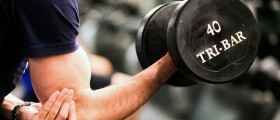




_f_280x120.jpg)
_f_280x120.jpg)


